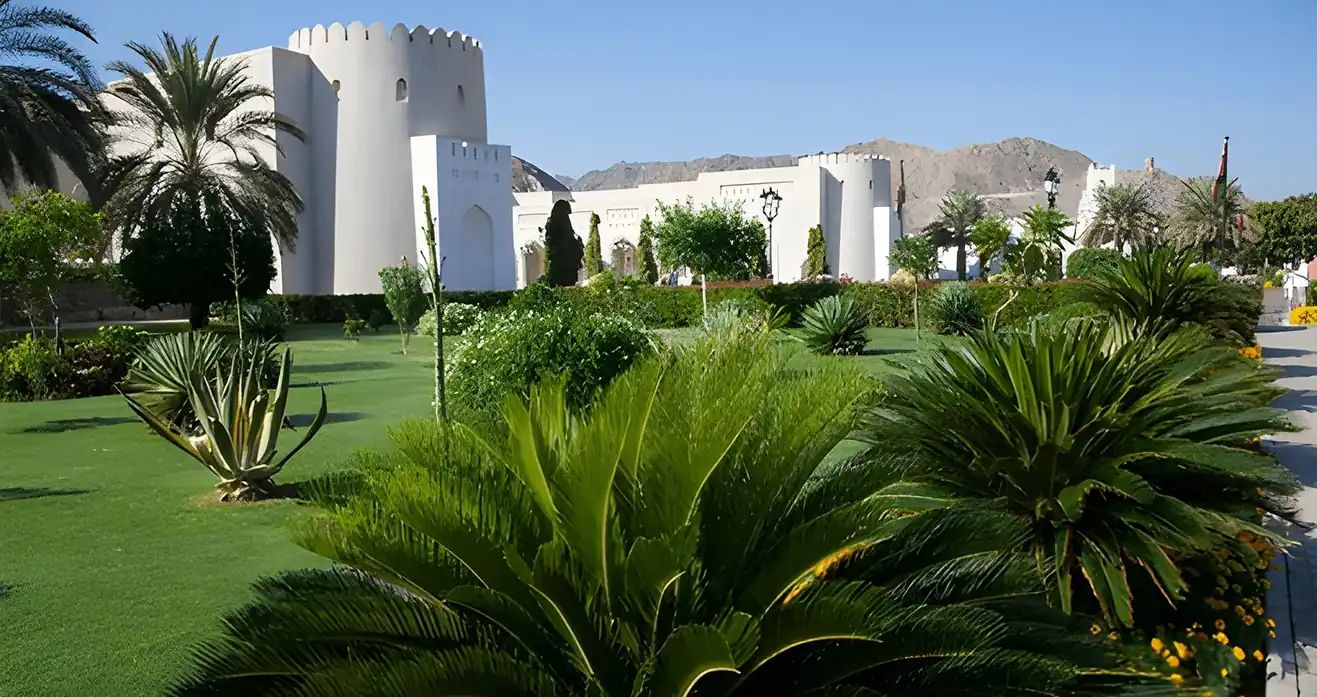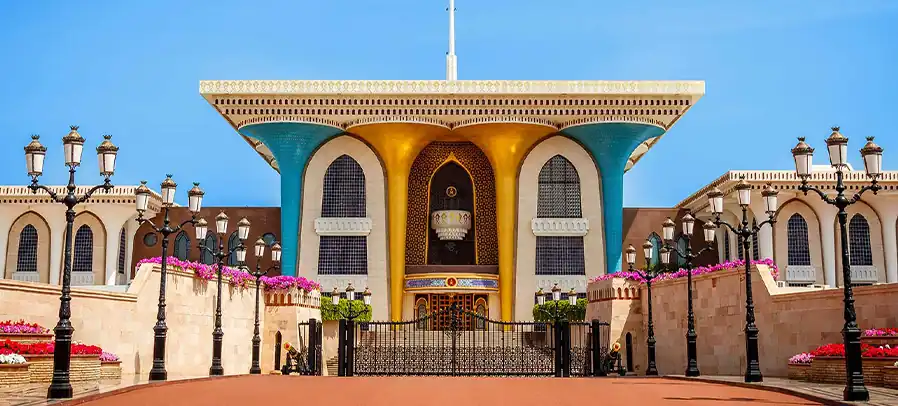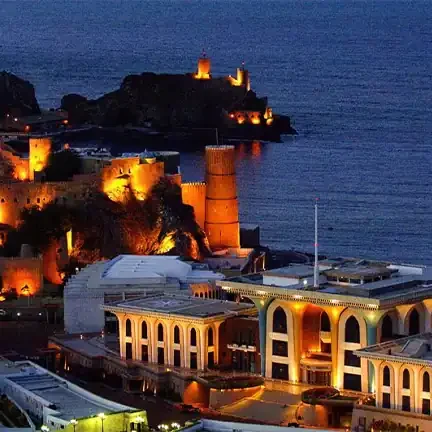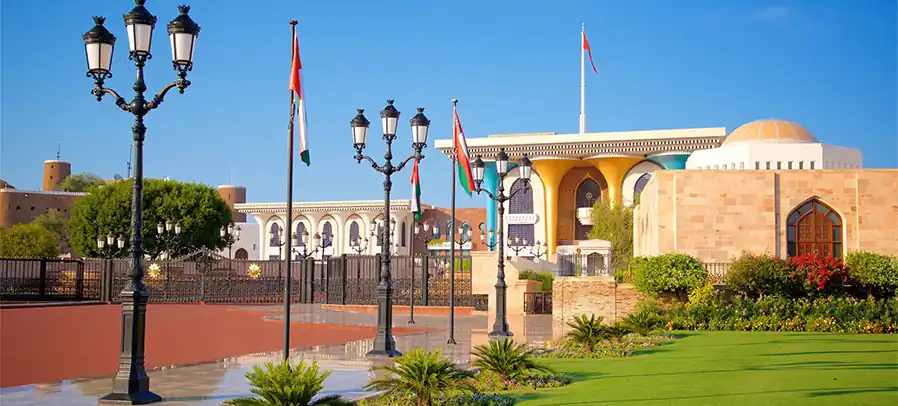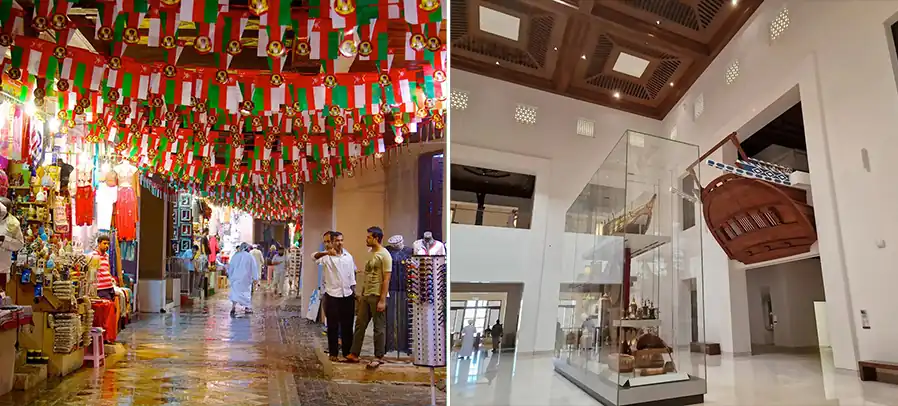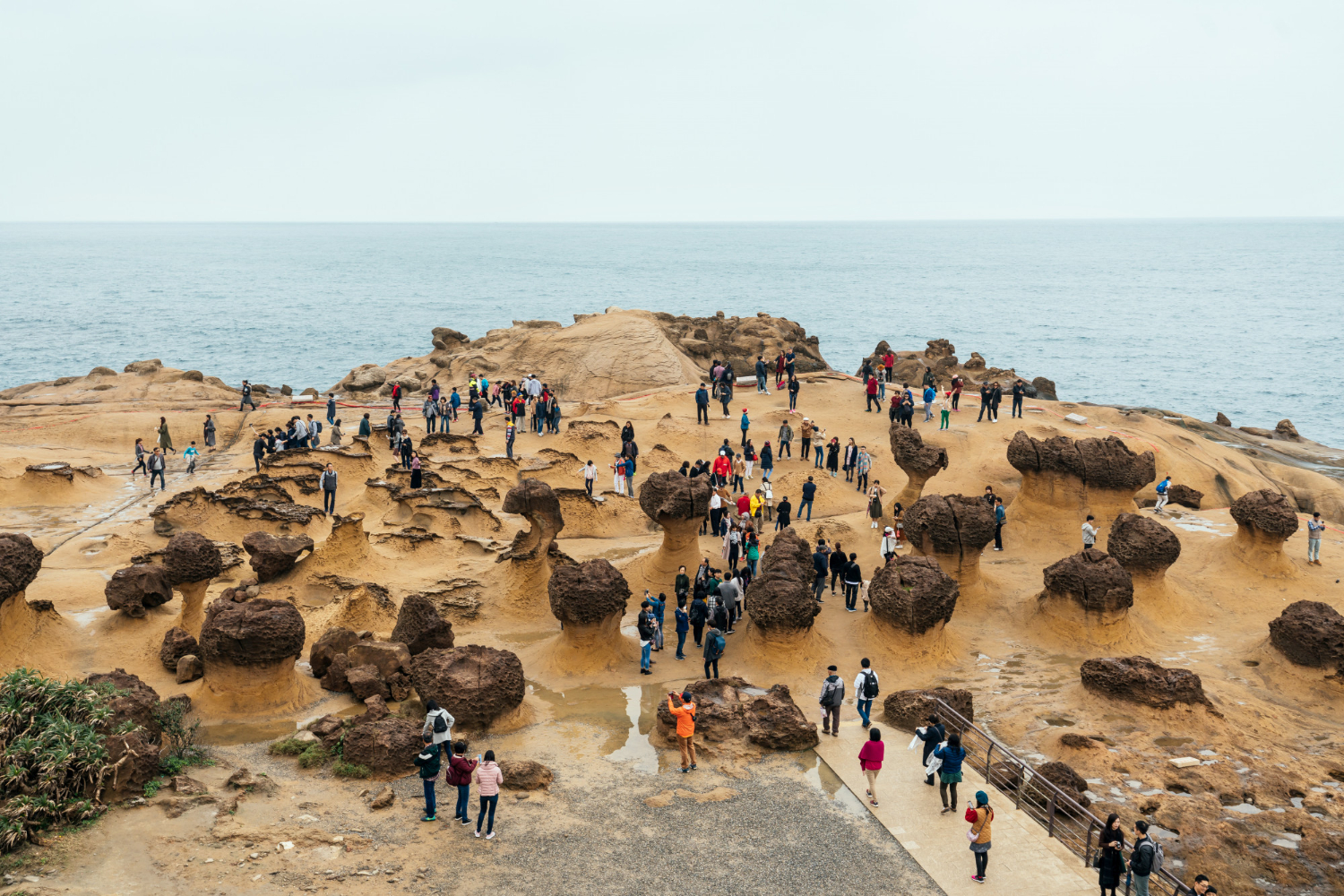The Royal Legacy and History
The story of Al Alam Palace stretches back more than two centuries. Originally built as Bait Al-Alam (House of the Flag) by Imam Sultan bin Ahmed, it stood as a proud symbol of Omani sovereignty. Later, under Sultan Qaboos’s reign, the palace was completely transformed into the magnificent structure we see today — the ceremonial heart of the Omani monarchy.
A Blend of Tradition and Modern Design
Unlike the towering skyscrapers of the Gulf, Al Alam Palace stands with quiet dignity. Its cube-shaped core, extending wings, and bold colors create an image both modern and timeless. The striking blue and gold tones aren’t mere decoration — they symbolize wisdom, strength, and royal prestige.
Architectural Highlights:
Each detail of the palace tells a story — mosaic columns that shimmer under Muscat’s sunlight, polished marble reflecting the Gulf breeze, and intricate geometric patterns inspired by Islamic art. The palace’s understated beauty mirrors Oman’s national spirit: modest yet majestic.
Surrounded by History and Scenic Views
Set between Al Jalali and Al Mirani forts, the palace enjoys a strategic location overlooking the Gulf of Oman. Visitors walking through the royal boulevard can admire breathtaking views of the sea and mountains — a perfect harmony of nature and architecture.
Gardens and Surroundings:
The surrounding gardens are meticulously landscaped, filled with vibrant flowers and immaculate lawns. The serene atmosphere invites visitors to pause, reflect, and capture the palace’s charm from every angle. Early mornings and late afternoons offer the best light for photos.
Diplomatic Ceremonies and Royal Events
While visitors can’t enter the palace, its courtyards and ceremonial grounds remain active with royal events. From welcoming foreign dignitaries with grand processions to hosting state ceremonies, Al Alam Palace continues to be the stage of Omani diplomacy and royal prestige.
Visiting Experience and Nearby Attractions
Visitors are welcome to explore the palace’s exterior freely. Entry is free, and photography is allowed from designated spots. Nearby, the National Museum of Oman offers a fascinating look at the country’s heritage, while Muttrah Souq immerses you in scents of frankincense and Omani crafts.
Travel Tips:
- Best time to visit: early morning or golden hour.
- Dress modestly out of respect for local culture.
-The area is pedestrian-friendly with nearby parking and cafes.
Conclusion
Al Alam Palace stands not just as a royal residence but as a living symbol of Oman’s harmony between heritage and modern vision. Whether you’re a history enthusiast, an architecture lover, or simply a curious traveler, this palace will leave you inspired by its elegance and spirit.

